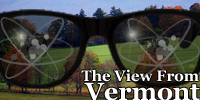Statement from ANS President Mary Lou Dunzik-Gougar on Barakah Nuclear Energy Plant
ANS congratulates the Emirates Nuclear Energy Corp. on bringing the first Barakah reactor to full operational capacity.

A message from Goodway Technologies
Optimizing Maintenance Strategies in Power Generation: Embracing Predictive and Preventive Approaches
ANS congratulates the Emirates Nuclear Energy Corp. on bringing the first Barakah reactor to full operational capacity.
 Communities that host nuclear power plants face “swift and severe” economic and social impacts following a plant’s closure, according to a report by the Nuclear Decommissioning Collaborative that was released on October 12. The free, 61-page report, Socioeconomic Impacts from Nuclear Power Plant Closure and Decommissioning, examines the effects of nuclear power plant closures on surrounding host communities, along with the barriers to planning and mitigation, and offers recommendations to nuclear closure communities across the nation.
Communities that host nuclear power plants face “swift and severe” economic and social impacts following a plant’s closure, according to a report by the Nuclear Decommissioning Collaborative that was released on October 12. The free, 61-page report, Socioeconomic Impacts from Nuclear Power Plant Closure and Decommissioning, examines the effects of nuclear power plant closures on surrounding host communities, along with the barriers to planning and mitigation, and offers recommendations to nuclear closure communities across the nation.
According to the report, a typical nuclear power plant may operate in a relatively rural area and contribute upward of $400 million annually to the local and regional economics. That loss of revenue can have a severe impact on local public services such as schools and emergency responders. In addition to the economic benefits of operating nuclear power plants, the report points out that plant employees and their families strengthen host communities through their participation in local cultural, civic, and volunteer opportunities.

On August 27, I stood in front of small groups of socially distanced employees at our Dresden Generating Station in Illinois, announcing plans for the premature retirement of the nuclear facility next fall. A hundred miles away, our chief operating officer was delivering a similar, equally somber announcement to employees at the Byron Station.
Despite being among the safest, most efficient, and reliable nuclear plants in the nation, Dresden and Byron face revenue shortfalls in the hundreds of millions of dollars because of declining energy prices and market rules that allow fossil fuel plants to underbid clean merchant nuclear resources in the PJM capacity auction, even though there is broad public support for sustaining and expanding clean energy resources to address the climate crisis.
As the voice of American nuclear engineers and scientists, ANS congratulates NuScale Power for receiving the first-ever final safety evaluation report for a small modular reactor issued by the U.S. Nuclear Regulatory Commission.
Nuclear energy is faced with a number of challenges in a changing energy landscape, driven by the need to reduce carbon emissions to mitigate climate change. Renewable energy technologies are being considered as the solution to climate change and are increasingly being deployed across the world. However, renewable energy sources, particularly solar and wind, are highly variable, and deployment of these technologies has resulted in significant perturbances in the energy market, raising questions about grid stability and the adaptability of other sources to compete in a changing marketplace that prioritizes renewables. Nuclear plants, well suited for baseload operation, have demonstrated technical capability and flexibility to respond to the fluctuating demand; however, they have also discovered that the economics of such operating mode are not necessarily optimal to their financial security. On the other hand, despite contributing to the carbon emissions, the low cost of abundantly available natural gas and resultant low-cost electricity have exacerbated the economic pressure on nuclear technologies, raising questions about their survival and role in future energy systems1.
Welcome to 2019! I hope everyone who took a break enjoyed it. For those who didn't, why didn't you? Initially, I had thoughts of trying to separate from social media and news to a significant extent during the holidays but, after conversations with Linda Zec (our wonderful ANS staff liaison for the Social Media Team, among many other things) decided that it was impractical to do so for a variety of reasons. So, as the holiday furor ebbed and flowed and I continued, still connected, to read news and year-end summations, I found myself wishing that there wouldn't be so much frustrating news in 2019. That's why I decided to open my eighth calendar year writing for the ANS Nuclear Cafe with a wish list, or "listicle" in the inside jargon, if you prefer. Here, in ascending order of importance (or, I suppose, increasing order of unlikelihood) are my five wishes for this new year in nuclear energy. (All on one screen; no annoying "next" buttons. You're welcome.)
 ANS member Dr. Christopher Morrison was a recent guest on The Space Show. Dr. Morrison covered space radiation, lifetime radiation limitations, legal limits, rodent GCR and radiation experimentation, terrestrial radiation simulations, space nuclear power & propulsion, super-cooling conductivity.
ANS member Dr. Christopher Morrison was a recent guest on The Space Show. Dr. Morrison covered space radiation, lifetime radiation limitations, legal limits, rodent GCR and radiation experimentation, terrestrial radiation simulations, space nuclear power & propulsion, super-cooling conductivity.
Previous articles in this series were published on November 8 and November 14; this is the third and final installment of the series, which concludes just prior to the 60th anniversary of President Eisenhower's famous "Atoms for Peace" speech. That speech, whose official title was "Atomic Power for Peace," was delivered to the General Assembly of the United Nations on December 8, 1953 and its ramifications for the future of civil nuclear energy the world over were immense.
 Shortly after 11 a.m. on Tuesday, May 7, 2013, the operators at Dominion Resources' Kewaunee nuclear power plant opened its output breaker, disconnecting the turbine generator from the grid for the last time after just under 40 years of operation. Shutdown of the reactor followed, and the plant entered what for some is an uncertain (even if pre-ordained) future-a long-term storage period, followed eventually after many years by the complete dismantling and removal of the plant.
Shortly after 11 a.m. on Tuesday, May 7, 2013, the operators at Dominion Resources' Kewaunee nuclear power plant opened its output breaker, disconnecting the turbine generator from the grid for the last time after just under 40 years of operation. Shutdown of the reactor followed, and the plant entered what for some is an uncertain (even if pre-ordained) future-a long-term storage period, followed eventually after many years by the complete dismantling and removal of the plant.
Plus a few pointers to what's in store for 2013
The 129th weekly Carnival of Nuclear Energy Bloggers is up at Next Big Future.
Southern California Edison submits a plan to the NRC for Unit 2
Scroll down to hurricane graphic for resources and links.
Restart of the nation's nuclear reactors will be guided by its actions
On September 11, the National Nuclear Security Administration (U.S. Department of Energy) hosted a public meeting in Chattanooga, Tenn., concerning its Supplemental Environmental Impact Statement on the disposition of surplus weapons-grade plutonium as mixed-oxide (MOX) fuel for use in power reactors. You may have seen the ANS Call to Action for the hearing and perhaps read the ANS position statement or background information.
Implementation of the energy policy announced last week will keep reactors running well into the second half of the 21st century.
 The weekly Carnival is the collective voice of blogs by many of the Internet's foremost nuclear experts and advocates, who continue each week to tell the story of nuclear energy around the World Wide Web.
The weekly Carnival is the collective voice of blogs by many of the Internet's foremost nuclear experts and advocates, who continue each week to tell the story of nuclear energy around the World Wide Web.
 When the heat released by nuclear fission is used in a steam plant to produce mechanical power, the second law of thermodynamics dictates that a large part of the heat must be rejected to the environment. Most land-based nuclear plants reject heat by using cooling water from a river or ocean.
When the heat released by nuclear fission is used in a steam plant to produce mechanical power, the second law of thermodynamics dictates that a large part of the heat must be rejected to the environment. Most land-based nuclear plants reject heat by using cooling water from a river or ocean.
When I was registering for the various events scheduled to take place during the ANS Annual Meeting this past June, I was quite excited to see that one of the three technical tours would be at Exelon's Dresden Nuclear Station, not too far from downtown Chicago where the meeting was taking place. Luckily, I made the cut for attendance and was issued a ticket for the tour when I checked in at the meeting desk.